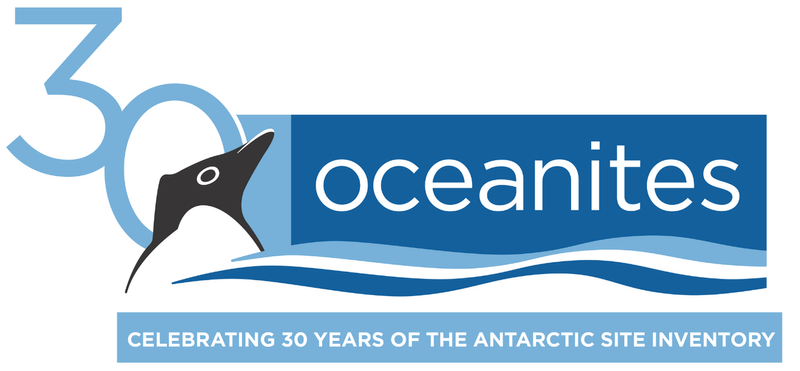
Antarctic Site Inventory
The first aspect of Oceanites’ ongoing science program is its seminal Antarctic Site Inventory project (ASI) that began in 1994 and which, over 27 consecutive field seasons, has made 2,100 census visits and collected data at 258 different Antarctic Peninsula locations.
The ASI began fieldwork in November 1994, examining whether opportunistic visits can be used: to effectively and economically detect possible visitor-caused changes in the physical features, flora, and fauna of sites in the Antarctic Peninsula being visited repeatedly by ship-based tourists; to collect baseline information necessary to detect possible changes in the physical and biological variables being monitored; and to determine how best to minimize or avoid possible environmental impacts of tourism in the Antarctic Peninsula area.
The ASI has demonstrated the ability to reach Antarctic Peninsula visitor sites frequently and cost-effectively, relying opportunistically on expedition tour vessels, and, occasionally, government vessels for logistics support. Well-timed visits by trained researchers have proved an effective means of characterizing sites and for collecting relevant biological data for purposes of monitoring and assessing the Antarctic Peninsula environment.
Data collected by the ASI assisted the implementation of the 1991 Protocol on Environmental Protection to the Antarctic Treaty, which, among other things, requires a priori environmental impact assessments for all human activities, including tourism, and for monitoring to be done, to assess and verify predicted environmental impacts.
Oceanites’ ASI also continues to assist the implementation of the 1982 Convention on the Conservation of Antarctic Marine Living Resources, particularly the multilateral response to concerns about unregulated increases in krill catches in the Southern Ocean that could be detrimental for the Antarctic marine ecosystem. This is true for seabirds, seals, and whales — organisms other than penguins — that depend on krill for food. Oceanites is an invited, international expert at meetings of the Commission that implements this treaty and its supporting scientific committee, and Oceanites annually reports its findings and analyses to these bodies.
More specifically, the ASI:
Characterizes decadal scale changes in these populations throughout the Peninsula;
Discerns how Antarctic species are changing in abundance, relative abundance, and spatial distribution;
Identifies the factors specifically driving these long-term changes;
Examines how Peninsula biological and physical processes, as well as direct/cumulative impacts from human activities, may connect;
Examines the likely drivers of population shifts (both numerical and spatial); and
Forecasts Peninsula-wide changes in the relative balance between the region’s three breeding penguin species.
Describing more precisely how the warming Peninsula effects change — e.g. whether or not detected penguin population changes are or may be related to food (krill and fish distribution and abundance), assists both the management of the Antarctic Peninsula and also provides information critical to the estimation and management of krill in the adjacent areas of the-Southern Ocean.
The ASI is the only project monitoring penguin and seabird population changes throughout the Peninsula, and the only project regularly censusing the species-diverse, environmentally sensitive tourism sites now subject to site visitation guidelines adopted at Antarctic Treaty Consultative Meetings. The ASI’s comprehensive approach is unique, aimed at collecting and analyzing data that are otherwise impossible to obtain via ‘single site’ penguin studies or at national Antarctic research stations, and has generated a large body of scientific data, analyses, and information.
To fill ‘data gaps’ — that is, data from sites that have never been accurately counted or sites from which data has not been not been collected over the last few decades, Oceanites plans to inaugrate an independent, stratified long-term Antarctic Peninsula monitoring plan. This effort will cover sites that are both near and far removed from fishing, tourism, and other human activities, which data will assist in sorting whether detected changes are climate-induced, human-induced, or caused by other factors. To this end, Oceanites will utilize small drones (‘unmanned aerial vehicles’) to gather penguin nest/chick count data that will be digitally processed using a new algorithm our team has developed.
The overall guiding principle is that effective, long-term conservation only can be achieved by regular monitoring of the entire ecosystem in question.

